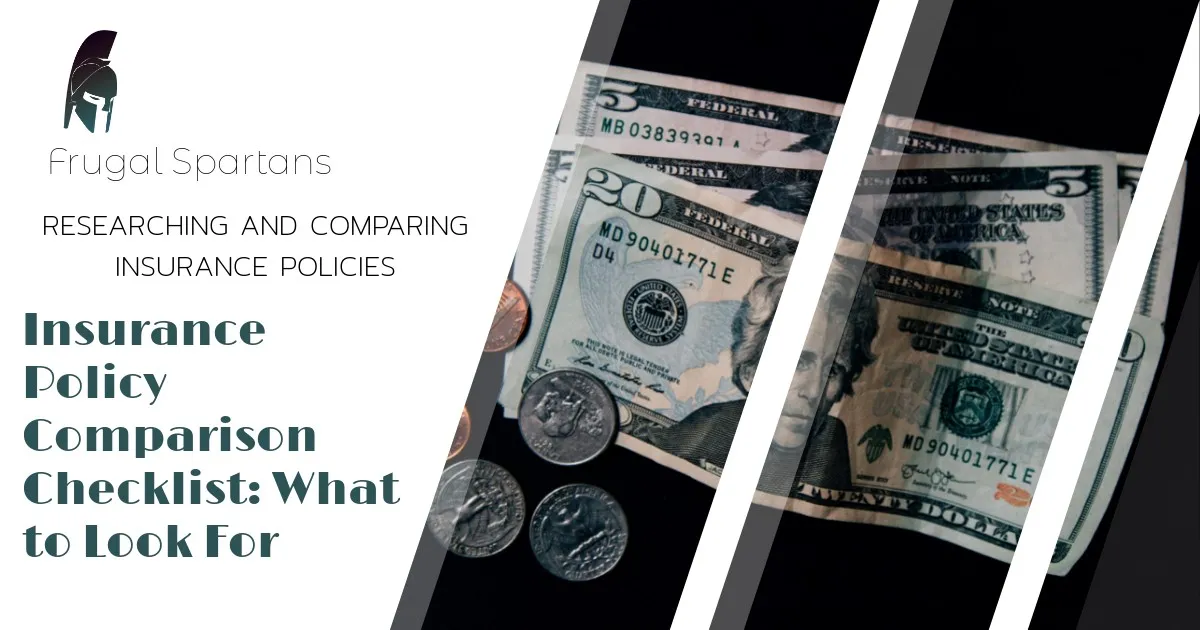Frugal Insurance: Balancing Coverage and Cost-Effectiveness
In today’s world, where financial prudence is highly valued, frugal insurance has emerged as a sensible approach to protecting assets and mitigating risks without breaking the bank. Frugal insurance is about finding the sweet spot between adequate coverage and affordable premiums, allowing individuals and families to safeguard their financial well-being without compromising their long-term financial goals.
Understanding Frugal Insurance

Frugal insurance is not about skimping on necessary coverage or leaving oneself vulnerable to financial ruin. Instead, it’s a strategic approach to insurance planning that involves carefully assessing risks, understanding insurance options, and making informed decisions to optimize coverage while minimizing costs.
The core principles of frugal insurance include:
- Risk Assessment: Identifying and evaluating potential risks that could lead to financial losses.
- Coverage Prioritization: Determining the most critical risks to insure against and prioritizing coverage accordingly.
- Policy Comparison: Shopping around and comparing insurance policies from multiple providers to find the best value for money.
- Deductible Optimization: Selecting the optimal deductible level to balance premium costs and out-of-pocket expenses.
- Coverage Customization: Tailoring insurance policies to meet specific needs and avoiding unnecessary add-ons.
- Regular Review: Periodically reviewing insurance coverage to ensure it remains adequate and cost-effective.
Benefits of Frugal Insurance
Frugal insurance offers several benefits, including:
- Cost Savings: By carefully selecting coverage and optimizing policy features, individuals can significantly reduce their insurance premiums.
- Financial Security: Frugal insurance provides peace of mind knowing that financial assets are protected against unforeseen events.
- Budget Management: Lower insurance premiums free up funds for other financial goals, such as saving for retirement or investing in education.
- Customized Coverage: Frugal insurance allows individuals to tailor their coverage to their specific needs and circumstances, avoiding unnecessary expenses.
- Long-Term Financial Planning: By managing insurance costs effectively, individuals can improve their overall financial stability and achieve their long-term financial goals.
Types of Frugal Insurance
Frugal insurance principles can be applied to various types of insurance, including:
-
Auto Insurance:
- Liability Coverage: Meet the minimum legal requirements for liability coverage to avoid penalties and protect against financial losses in case of an accident.
- Collision and Comprehensive Coverage: Consider the value of your vehicle and your risk tolerance when deciding whether to purchase collision and comprehensive coverage.
- Deductible Optimization: Choose a higher deductible to lower your premium, but make sure you can afford to pay the deductible in case of an accident.
- Discounts: Take advantage of discounts for safe driving, good grades, or bundling multiple policies.
-
Home Insurance:
- Coverage Amount: Ensure your home insurance policy covers the full replacement cost of your home and personal belongings.
- Deductible Optimization: Choose a higher deductible to lower your premium, but make sure you can afford to pay the deductible in case of a claim.
- Discounts: Take advantage of discounts for having a security system, smoke detectors, or a new roof.
- Bundling: Bundle your home and auto insurance policies with the same provider to save money.
-
Health Insurance:
- Plan Selection: Choose a health insurance plan that meets your healthcare needs and budget.
- Deductible Optimization: Consider the deductible, copays, and coinsurance when selecting a health insurance plan.
- Preventive Care: Take advantage of preventive care services to stay healthy and avoid costly medical bills.
- Generic Medications: Ask your doctor about generic medications to save money on prescription drugs.
-
Life Insurance:
- Coverage Amount: Determine the appropriate amount of life insurance coverage based on your financial obligations and dependents’ needs.
- Term Life Insurance: Consider term life insurance for affordable coverage during a specific period, such as while raising children or paying off a mortgage.
- Whole Life Insurance: Whole life insurance offers lifelong coverage and a cash value component, but it is typically more expensive than term life insurance.
- Shop Around: Compare life insurance quotes from multiple providers to find the best rates.
Tips for Practicing Frugal Insurance
- Assess Your Risks: Identify and evaluate potential risks that could lead to financial losses.
- Prioritize Coverage: Determine the most critical risks to insure against and prioritize coverage accordingly.
- Shop Around: Compare insurance policies from multiple providers to find the best value for money.
- Optimize Deductibles: Select the optimal deductible level to balance premium costs and out-of-pocket expenses.
- Customize Coverage: Tailor insurance policies to meet specific needs and avoid unnecessary add-ons.
- Bundle Policies: Bundle multiple insurance policies with the same provider to save money.
- Take Advantage of Discounts: Inquire about discounts for safe driving, good grades, or having safety features in your home.
- Review Coverage Regularly: Periodically review insurance coverage to ensure it remains adequate and cost-effective.
- Maintain a Good Credit Score: A good credit score can help you qualify for lower insurance rates.
- Pay Premiums on Time: Paying premiums on time can help you avoid late fees and maintain continuous coverage.
Common Mistakes to Avoid
- Underinsuring: Failing to purchase adequate coverage to protect against potential losses.
- Overinsuring: Purchasing unnecessary coverage that does not provide significant value.
- Ignoring Deductibles: Not understanding how deductibles work and how they affect premium costs.
- Failing to Shop Around: Not comparing insurance policies from multiple providers to find the best rates.
- Neglecting Policy Reviews: Not periodically reviewing insurance coverage to ensure it remains adequate and cost-effective.
Conclusion
Frugal insurance is a smart and responsible approach to protecting your financial well-being without overspending on insurance premiums. By carefully assessing risks, prioritizing coverage, shopping around for the best rates, and optimizing policy features, you can find the right balance between adequate coverage and affordability. Remember, frugal insurance is not about cutting corners or sacrificing necessary protection; it’s about making informed decisions to maximize the value of your insurance coverage and safeguard your financial future.